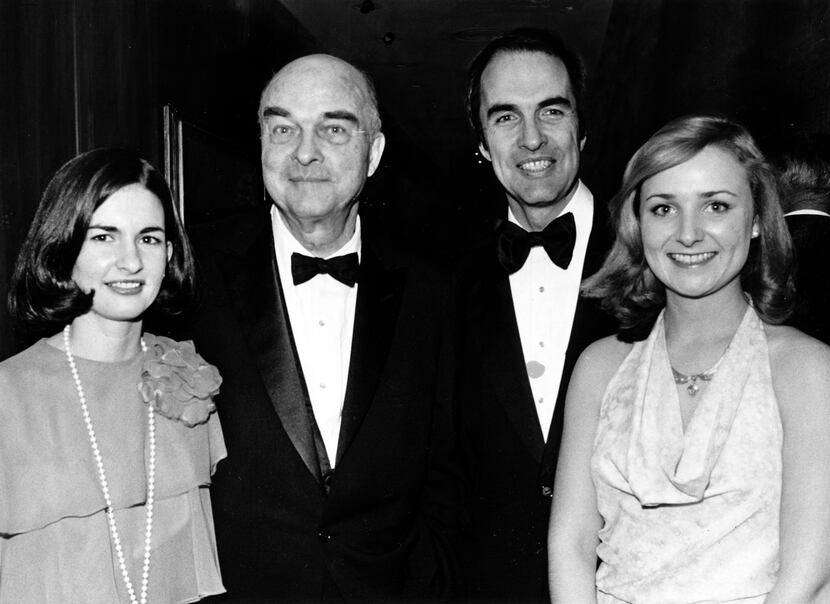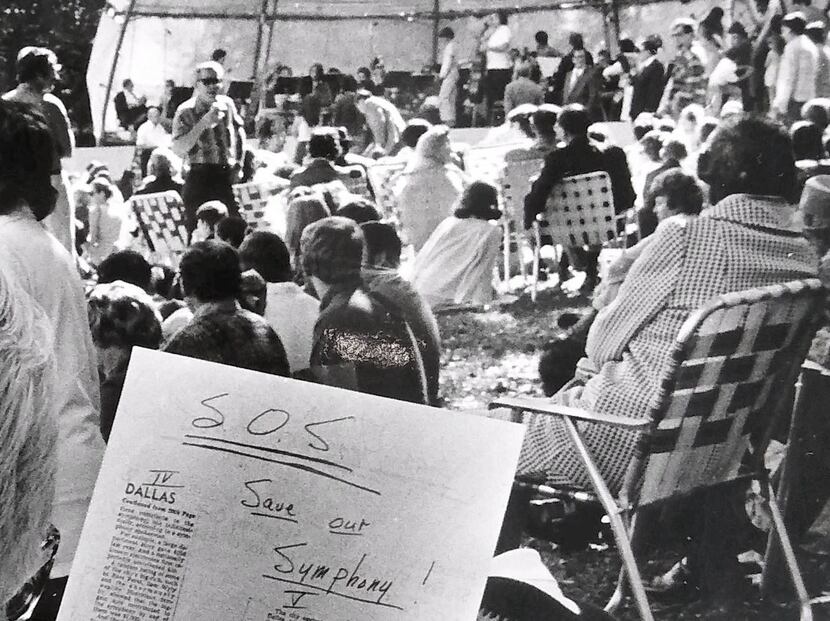The Dallas Symphony Orchestra is facing the challenge of a lifetime. Concerts canceled because of the pandemic have led to a significant loss in revenue, and the orchestra recently had to call off its summer residency at the Bravo! Vail Music Festival in Colorado. The DSO is also evaluating its options for the fall.
That the DSO survived a previous disaster, 46 years ago, owed much to the leadership of entrepreneur and civic leader Philip Jonsson, who died April 22 in Little Rock, Ark., at age 95. The son of former Dallas Mayor J. Erik Jonsson, Philip was instrumental in helping save and reinvent the orchestra for a new generation.

Back on March 12, 1974, a history of shaky leadership and finances caught up with the orchestra. Influential businesses had reduced their contributions, and Ralph Rogers, a philanthropist and master fundraiser, had resigned as DSO board chairman in 1970.
Unable to pay its 86 musicians, the DSO suspended the rest of its 1974 season. The organization later canceled its summer season and announced that it was about $1 million in debt, which would be around $5 million today.
To make matters worse, the DSO’s music director, Max Rudolf, resigned at a fiery press conference in January 1974, criticizing the local business community and the DSO board. According to The New York Times, one observer said that Rudolf was horrified when he learned the orchestra’s manager had to “check everything with Papa” — Papa being Jack Vandagriff, president of the Symphony Association at the time.
In addition, the DSO was without a concertmaster and an assistant concertmaster. The first clarinetist and first trombonist had left the orchestra, and several violinists were auditioning for positions elsewhere.
All of this led the Times to report, “Many in Dallas believe that their once proud and distinguished orchestra is today a dying beast.”

In the summer of 1973, Philip Jonsson had been recruited by Margaret McDermott, already a force in artistic and philanthropic circles, to serve on the DSO Board of Governors. Jonsson worked on building up the board and successfully brought in bank presidents and influential Dallas leaders.
What he did with the symphony paralleled what his father did with the city itself. J. Erik Jonsson is often credited for having elevated Dallas’ image in the aftermath of the assassination of President John F. Kennedy on Nov. 22, 1963.
The elder Jonsson instituted the benchmark Goals for Dallas program in 1964, launching social service agencies to help the poor and minorities, air condition the city’s schools, promote a new I.M. Pei-designed City Hall and vastly upgrade the transportation, library and community college systems. Most important of all, perhaps, he spearheaded the effort to build Dallas/Fort Worth International Airport, marking a major regional turning point.
Because of his leading a decade-long effort to raise private funds to build a state-of-the-art library in downtown Dallas, it was named the J. Erik Jonsson Central Library.
As for Philip Jonsson, his biggest victory at the DSO may have been the recruitment of Lloyd Haldeman as orchestra’s manager in the fall of 1974. John Ardoin, the longtime music critic of The Dallas Morning News, attributed the resurrection of the symphony to Haldeman, who spearheaded large fund drives, introduced new concert series, secured a 52-week contract for orchestra musicians and convinced local leadership to assume a more active role in the future of the DSO.
Writing in The New York Times in 1981, Ardoin called it “the most amazing recovery act since Lazarus.”

Jonsson later chaired the search committee that chose Eduardo Mata as the DSO’s music director, a position he held from 1977 to 1993. Jonsson also served as co-chair of the committee that selected the downtown location where the Meyerson Symphony Center was built.
But Jonsson might be best remembered at the DSO today for his leadership during a crisis and the lessons he taught the city. “Philip was able to persuade the leaders in Dallas that the orchestra is a critical part of the city, for businesses, for individuals, for everyone,” says Kim Noltemy, president and chief executive of the DSO.
While the 2020 pandemic has placed the DSO under great financial pressure, the situation is different from the one in 1974, Noltemy says, because of the orchestra’s “excellent relationships” with organizations in Dallas.

The DSO has also benefited from its endowment, annual fund gifts from board members and donors, and those who decided to donate their tickets or use the ticket amount as credit for next season. Although the DSO has implemented cost-cutting measures, it remains one of the few major symphony orchestras in America yet to have furloughed or reduced the pay of its musicians or staff.
“We're very fortunate to have the continued support of so many people both financially and from an emotional perspective,” Noltemy says.
Although the disaster in 1974 differs from what is happening at the DSO today, the orchestra can still look back at Jonsson’s determined leadership and strategic partnerships as an example for how to address the challenges caused by the pandemic.

